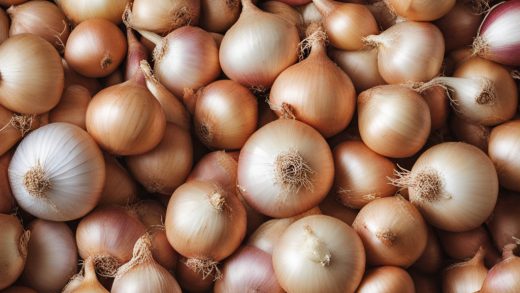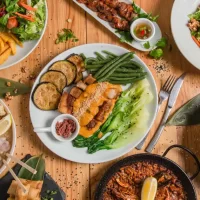Understanding Unusual Foods
The concept of unusual or exotic foods is entirely subjective, hinging on what one is accustomed to in their cultural or personal diet. For some, foods such as fermented herring or fried tarantulas might sound bizarre and daunting, while to others these can be familiar and even comforting. Like all other realms of knowledge, understanding unusual foods first requires an openness to explore, both in terms of information and actual taste experiences.
One can truly comprehend unusual foods by delving into academic and ethnographic resources or travelling to regions where these foods are part of conventional cuisines. However, the most crucial step towards understanding unusual foods is to conquer deep-seated food fears, which are often a blend of the unknown and misplaced cultural perceptions. With the rise of culinary tourism and global food shows, there is a growing interest in these once deemed “weird” foods. As one starts to appreciate the richness and diversity of global cuisines, what once appeared unusual may just become another fascinating facet of our shared human experience.
Cultural Context of Exotic Cuisine
Exotic cuisine is often steeped in local traditions, beliefs, and histories that reflect the nature of the societies they emanate from. It is a testament to the diversity and richness of human culture, showcasing a society’s resources, creativity and adaptation to their environment. From the use of insects as a protein source in Southeast Asia, the pungent durian fruit loved and loathed in equal measure, to the fermented herring in Sweden known as surströmming, each offering provides unique insight into the cultural context from where these foods arose.
One must appreciate that what might seem unusual or even bizarre in one culture could be commonplace and integral in another. It’s fascinating how cultural norms and attitudes toward certain foods can be deeply entrenched in societal customs and traditions. In Japan, the potentially deadly Fugu fish is considered a delicacy, only to be prepared by highly-trained, licensed chefs. Meanwhile, in Scotland, a dish like haggis—made from sheep’s pluck—may raise eyebrows among the uninitiated, yet is held in high esteem as the national dish. Truly, understanding exotic cuisine requires not just an adventurous palate, but also an empathetic appreciation of diverse cultures.
Exploring Bizarre Eats: The Adventurous Eater’s Guide
Venturing into the realm of bizarre eats isn’t the stuff of faint-hearted, it requires a spirit of adventure and, dare we say, a dash of brave gusto. A plethora of distinctive delicacies are scattered across the globe, ranging from fermented shark in Iceland, to the infamous durian fruit of Southeast Asia, each emanating an allure that continues to fascinate culinary explorers.
The adventurous eater, while savoring these eccentric eats, can delve into the unique cultural histories and traditions tightly interwoven with these dishes. Surprisingly, it’s not just about the taste, but also the stories behind every bite that makes exploring such exotic cuisines a captivating journey. Indeed, the world of bizarre eats provides an unusual yet enticing doorway into a mysterious culinary universe that remains untapped by conventional eaters.
The Thrill of Tasting Uncommon Foods
Adventure, exploration, and experimentation; these are elements that justly captivate the culinary cognoscenti, searching for the thrill of tasting uncommon foods. From the pungent and potent Korean dish of fermented and buried skate called Hongeo, to the challenging Icelandic delicacy of hákarl (fermented shark), the world is a veritable playground for lovers of exotic, exciting food. The experimenting palate dares to storm the citadels of gastronomy, charting the waters where many others might fear to wade. The invisible boundaries of common menu options rudely shattered, these gourmands embark on an entirely open-ended exploration of sensory feasts.
In this adventurous journey, they share more than a meal; it’s a narrative of history, of geography, of culture and of civilization. Sampling Balut, a Filipino staple of partially developed duck eggs, invokes tales of survival, fertility, and luck. Savoring a forkful of Casu Marzu, the infamous Italian cheese riddled with live insect larvae, echoes centuries-old traditions of crafting and preserving. Every unfamiliar dish bears an echo of tales from far and beyond, enriching every adventurous bite with global flavors and stories to enhance the experience. Emboldening these thrill-seekers, every spoonful, every chopstick-drop of food is another adventure, another culinary tale to recount.
The Science Behind Fear of Trying New Foods
The aversion towards trying new foods, particularly exotic ones, is mediated by a psychological phenomenon termed food neophobia. According to several studies, it boils down largely to genetics and upbringing. The innate survival instinct ingrained in our DNA often reacts to unfamiliar foods as potential threats, triggering a fear response. Equally influential is the environment in which a person grows up, where early exposure to a variety of foods can significantly diminish food neophobia later in life.
While genetics and upbringing lay the groundwork for food neophobia, additional nuances come into play. Research supports that humans, by nature, are omnivores and should be open to a wide range of food options. However, societal factors, individual personality traits, and past negative experiences with food also markedly sway our willingness to experiment with new cuisines. Therefore, the fear of trying new foods is not merely a matter of personal preference but is interwoven with complex psychological, social, and biological dynamics.
Unfamiliar Foods: A Test of Courage
Nudging the boundaries of typical culinary comfort zones, many exotic dishes reflect cultures vastly different from our own and offer a blend of flavors that may initially seem daunting. When it comes to trying unfamiliar foods, the initial step is a formidable one, which requires a good measure of courage. It stands as a personal test, a gut-check of our culinary bravery and curiosity. It challenges us to examine our ingrained food preferences and dares us to step outside of these confines into a realm of exciting culinary exploration.
Indeed, in many ways, this test of courage extends beyond just experiencing new tastes—it can also open a window into the traditions, history, and life of other cultures. It’s a test not just of the palate, but also of the mind and spirit. No matter how peculiar a dish may seem, every mouthful carries a story. The peculiar blend of unfamiliar ingredients can create a symphony of flavors that, while unusual, unravel the richness of different cultures, their history and traditions. Venturing into this gastronomic world requires a sense of adventure and, often, a deep breath before the first bite. Yet, the delight one encounters after overcoming the initial hesitation can lead to rewarding and unexpected culinary discoveries.
Challenging Your Palate: Dare to Taste the Unusual
To the uninitiated, the allure of exotic foods can be both intriguing and intimidating. Drawing from different regional and cultural contexts, the vast spectrum of global cuisine presents an exciting adventure, a veritable challenge for our palates. From the piquant punch of a Szechuan peppercorn to the hypnotizing richness of a French escargot, each unfamiliar flavour and texture offers a unique testimony to the world’s culinary diversity.
The excitement of tasting the unusual doesn’t solely lie in the act of consumption, but also the process of overcoming one’s discomfort. The daring decision to taste an unfamiliar delicacy opens up a world of sensory experiences. Surviving the unexpected taste of fermented shark in Iceland or the prickle of tongue-numbing Szechuan peppers in China, not only broadens culinary knowledge but also builds a connection to the traditions and people of foreign lands. It’s an intimate, astonishing journey for the culinary enthusiast who dares to challenge the status quo.
Overcoming Food Fears: A Guide for the Culinary Brave
For many people, the major obstacle that prevents them from exploring the diverse world of unusual food is a deeply rooted fear. Such fear, often stemming from unfamiliarity, can restrict one’s gastronomical experiences significantly. However, confronting and overcoming these food anxieties can pave the way for a much broader culinary horizon.
Developing an appreciation for exotic foods demands patience and open-mindedness. Start off by educating yourself about the dish: its ingredients, history, and cultural significance. Next, mentally prepare yourself for the new flavors and textures before diving in. Remember that it’s okay not to like the dish initially. What matters is your willingness to get out of your comfort zone and venture into the exotic culinary territory.
The Uncharted Territory of Exotic Delicacies
Digging into the realm of exotic delicacies, it’s nothing short of a thrilling expedition, a palate tour to uncharted territories. It is where bold flavors mix with distinct food cultures, capturing the essence of each region in every bite. Be it consuming toasted ants from Colombia or savoring the fragrant durian fruit from Southeast Asia, these uncommon bites can be surprisingly delightful, offering a culinary journey worth exploring.
Yet, experiencing these exotic delicacies is not solely about the unexpected taste adventure. It’s an immersive learning experience that can teach us about geography, history, and food ecology. For instance, balut, the fertilized duck egg from the Philippines, tells the story of the nation’s struggle and survival, while the consumption of escargots in France speaks volumes about the country’s culinary sophistication. The adventure into exotic delicacies, indeed, extends beyond the meal itself, weaving into the unique cultural tapestry of the world we inhabit.
Final Thoughts on Embracing Exotic Foods
Embracing exotic foods often means stepping beyond our entrenched comfort zones and embarking on an exciting gastronomical adventure. It’s a culinary endeavor that has the potential to not only challenge our taste buds but also our biases and misconceptions about different cultures. The appetizing allure of the unknown beckons us, awakening an eager anticipation coupled with an unavoidable hint of trepidation. How we respond to this culinary call reveals more about our personality and worldview than we might initially believe.
In the realm of gastronomy, exotic and unusual foods often present an unmatched opportunity for cultural exploration. Tasting these unusual delicacies can transport us to different corners of the world, offering insightful glimpses into varied tradition and age-old customs. Whether it’s devouring a plate of crispy crickets in Thailand, savoring a spoonful of creamy Casu Marzu in Italy, or tackling the pungently infamous Durian fruit in Southeast Asia — the embrace of exotic foods introduces us to an unfamiliar, intriguing world brimming with unique flavours, textures, and traditions.































